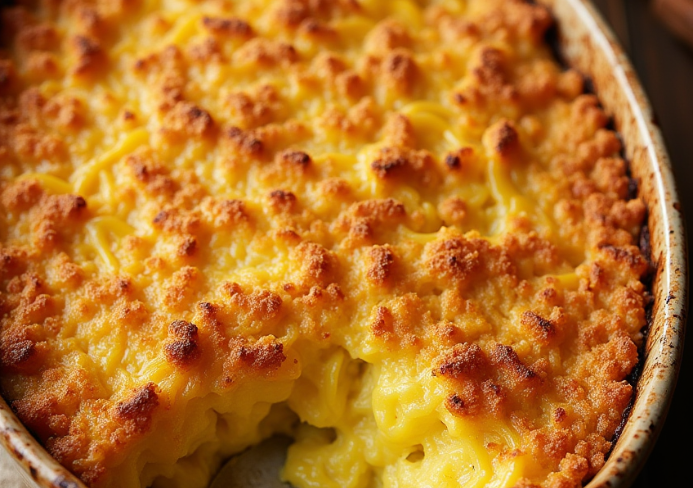Spring Pasta Primavera Recipe: Spring Pasta with Prosciutto, Peas, and Parmesan Cheese
Spring is the perfect time to lighten up your dinner table with a dish that celebrates the season’s freshest ingredients. This Spring Pasta Primavera with prosciutto, peas, and Parmesan cheese is a vibrant, flavorful, and easy-to-make meal that’s sure to impress whether you’re cooking for your family or hosting guests.
Combining delicate spring vegetables, savory cured meat, and the nutty richness of aged cheese, this pasta dish captures the essence of the season in every bite.
For more on what’s fresh and in season, check the USDA’s seasonal food guide. It’s a great way to make the most of your grocery haul or farmer’s market trip!
And if you’re curious about which Parmesan cheese to choose, Cheese.com explains the difference between varieties to help elevate your recipe with the right choice.
Table of Contents
🥗 Why You’ll Love This Recipe
- Bright and colorful – a feast for both the eyes and the palate
- Packed with in-season produce like peas, asparagus, and fresh herbs
- Quick to make – ready in under 30 minutes
- Versatile – can be adapted to vegetarian or gluten-free preferences
🧾 Ingredients You’ll Need
Here’s what you’ll need to whip up this springtime classic:
- 12 oz of your favorite pasta (linguine, penne, or spaghetti work great)
- 4 oz prosciutto, thinly sliced
- 1 cup fresh or frozen peas
- 1 cup asparagus, chopped into 1-inch pieces
- ½ cup grated Parmesan cheese
- 2 tablespoons olive oil
- 2 garlic cloves, minced
- Zest of 1 lemon
- Salt & freshly cracked black pepper
- Optional: fresh parsley, basil, or mint for garnish

🍳 Kitchen Tools You’ll Need
- Large pot for boiling pasta
- Sauté pan
- Cheese grater
- Mixing bowl
- Tongs or pasta spoon
👨🍳 How to Make Spring Pasta Primavera
Step-by-Step Instructions
- Cook the Pasta:
Bring salted water to a boil and cook pasta until al dente. Reserve ½ cup of pasta water before draining. - Sauté the Veggies:
In a large sauté pan, heat olive oil over medium heat. Add garlic and cook until fragrant (about 1 minute). Stir in the peas and asparagus and sauté for 3–4 minutes until tender but crisp. - Add Prosciutto:
Tear or slice the prosciutto and stir it into the pan. Let it crisp up slightly but not become chewy. - Combine Everything:
Add the cooked pasta, a splash of the reserved pasta water, and the lemon zest. Stir in the Parmesan cheese and mix until everything is creamy and well coated. - Season & Serve:
Finish with salt and pepper to taste. Top with more Parmesan and fresh herbs if desired.
🔥 Cooking Tips for Success
- Don’t overcook the veggies – they should stay bright and slightly crunchy.
- Use high-quality Parmesan like Parmigiano Reggiano for the best flavor.
- Save and use pasta water to create a silky sauce.
🧑🍳 Variations and Customizations
This recipe is very adaptable! Try these ideas:
- Vegetarian Version: Simply omit the prosciutto and add more veggies like cherry tomatoes or bell peppers.
- Creamier Texture: Add a splash of cream or a spoon of ricotta cheese.
- Extra Flavor Boost: Toss in toasted pine nuts or a dash of chili flakes.
🍷 Wine Pairing and Serving Ideas
Pair this dish with a crisp white wine such as:
- Pinot Grigio
- Sauvignon Blanc
- Vermentino
Serving suggestions:
- A side of arugula salad with lemon vinaigrette
- Garlic bread or focaccia
- Serve chilled for lunch or as a picnic pasta salad
For more pairing inspiration, visit Wine Folly’s pairing basics.
🧊 Storage & Reheating
- Store leftovers in an airtight container in the fridge for up to 3 days.
- Reheat gently in a skillet with a splash of water or broth.
- Avoid microwaving the prosciutto for too long to prevent rubbery texture.
❓ Frequently Asked Questions
What does primavera mean in pasta?
Primavera means “spring” in Italian and refers to dishes made with fresh seasonal vegetables.
Can I make pasta primavera ahead of time?
Yes! You can prepare it a day in advance and reheat gently on the stovetop.
Is pasta primavera typically vegetarian?
Traditionally, yes. But this version adds prosciutto for a savory, meaty element.
What vegetables can I use in spring pasta?
You can mix and match:
- Peas
- Asparagus
- Zucchini
- Cherry tomatoes
- Green beans
Can I use frozen peas instead of fresh?
Absolutely. Just rinse them under warm water and toss directly into the sauté pan.
How do I prevent prosciutto from getting chewy?
Add it after the veggies and cook briefly — this keeps it crispy but tender.
✅ Final Thoughts
This Spring Pasta Primavera is a seasonal favorite for good reason. It’s bright, savory, and endlessly customizable. With the saltiness of prosciutto, the sweetness of peas, and the depth of Parmesan, this dish is the definition of spring on a plate.
Try it tonight—and taste the season!






